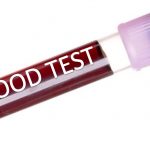 Stanford researchers develop a test that needs to read only 18 genes to determine if a virus or bacteria is causing an infection, and if you need an antibiotic.
Stanford researchers develop a test that needs to read only 18 genes to determine if a virus or bacteria is causing an infection, and if you need an antibiotic.
There are a lot of reasons you don’t need to take antibiotics, even if you think you do.
In fact, experts are discovering that a good number of antibiotics given out every day do nothing of value for the people taking them.
The U.S. Centers for Disease Control and Prevention (CDC) estimates that half of antibiotic prescriptions are inappropriate.
Besides acute side effects, the practice of over-prescribing unnecessary antibiotics has given rise to bacteria so smart and powerful that none of our best efforts can stop them.
Those bugs kill about 23,000 people each year, the same amount as the entire population of Laguna Beach, California.
Bacteria or virus?
To help preserve the effectiveness of current antibiotics, experts are looking into rapid diagnostic tools that can determine if the cause of someone’s infection is indeed caused by bacteria.
If it’s due to a virus, like the common cold and flu, then no antibiotics should be given.
Still, doctors regularly hand out antibiotics that might do more harm than good, mostly due to a lack of training in infectious diseases. Also, patients demand them.
If doctors could have a quick, easy, and inexpensive way to assure their patients that their symptoms are caused by a virus, then researchers say that will be a step in the right direction.
That’s also part of President Barack Obama’s National Action Plan to Combat Antibiotic-Resistant Bacteria. But right now, it’s not as if a doctor or nurse can tell the difference with a naked eye.
“Clinically, it can be very difficult to differentiate between bacterial and viral infections,” Dr. Tim Sweeney, Ph.D., an engineering researcher associated with the Stanford Institute for Immunity, Transplantation, and Infection, told Healthline.
Sweeney was recently lead author on research published in the journal Science Translational Medicine. He and fellow researchers are one step closer to finding a fast and inexpensive way to differentiate bugs, an important step in humanity’s fight against deadly bacteria.
Gene behavior gives away identity
Sweeney and Purvesh Khatri, Ph.D., an assistant professor of medicine at Stanford, have been working on a diagnostic test for years.
The current ideation serves two tests at one time. The first confirms an infection, while the second test differentiates the cause as either viral or bacterial. It does this by examining gene expression, or how genes behave in response to something.
While prior tests examined hundreds of genes, making it take longer at a greater cost, the new Stanford model uses a combination of 18 genes. There are 11 to detect an infection and seven to determine bacteria or a virus. This is done in a lab with a simple blood sample, and takes about an hour.
In their recent studies, the Stanford team tested blood from 1,057 samples from 20 different cohorts, including 96 critically ill children with blood infections. They found the test could accurately detect infection and differentiate the cause.
The test, Sweeney says, “reads the immune system” to see if the infection is being caused by bacteria.
Besides saving antibiotics for when they’re truly needed, like in cases of larger, more serious infections such as sepsis, the test may save lives.
“Even a few hours can mean a lot in terms of patient mortality,” Sweeney said.
It will take considerable time before a doctor would be able to use the 18-gene test.
First, researchers must use a bigger sample to double check their findings. Then, Sweeney says, it will be used in the hospital setting before clinics.
The National Institutes of Health (NIH), and private groups such as the Bill and Melinda Gates Foundation, funded Khatri and Sweeney’s most recent research.
Source: Healthline

















